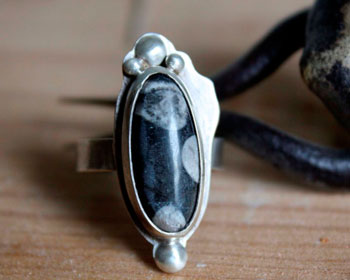- Jewelry
- Inspiration
- Our imagination
- Birthstones
- Celebrating with Eternal Flowers
- Druids and druidesses
- Flower meanings
- History, archeology jewelry
- Illumination jewelry
- Japanese symbols
- Lithotherapy and stone choice
- Maya calendar jewelry
- Stone color symbolism
- Stones catalogue
- Wedding anniversaries
- Searches a theme on the site
- Good Deals
- Paintings
- About
- Contact
JEWELRY
- Anklet
- Bracelets
- Brooches
- Cufflinks
- Earrings
- Pendants & Necklaces
- Rings
- Draw your jewelry
- GOOD DEALS
- How to clean your jewel
- Metal we used
INSPIRATION
- Our imagination
- Birthstones
- Celebrating with Eternal Flowers
- Druids and druidesses
- Flower meanings
- History, archeology jewelry
- Japanese symbols
- Lithotherapy and stone choice
- Illumination jewelry
- Maya calendar jewelry
- Stone color symbolism
- Stones Catalogue
- Wedding anniversaries
- Searches a theme on the site

Snowflake obsidian: history, healing properties and lithotherapy

Snowflake obsidian properties

This variety of obsidian, also known as "snowflake," "spotted," or "starred" obsidian, derives its charm from the white inclusions of phenocrysts. These orbicular formations result from the recrystallization of obsidian glass, creating patterns resembling white or gray spots that often contrast beautifully with a black or gray background.
Snowflake obsidian is a natural volcanic stone formed when molten lava cools rapidly, creating an igneous glass. Its white inclusions, sometimes referred to as "snowflakes," are typically composed of feldspar or clay crystals that develop as the magma cools. This stone features a smooth, glassy surface that provides exceptional durability and sharpness, making it highly desirable for crafting jewelry and tools.
Due to its formation, snowflake obsidian is also renowned for its hardness and resilience. Its ability to fracture into sharp edges explains its use in ancient times for crafting arrowheads, knives, and other cutting tools.
Mines: Italy, Japan, Mexico, the USA and Guatemala
History, legends, and beliefs surrounding snowflake obsidian
Snowflake obsidian, like other types of obsidian, has played a significant role in numerous ancient civilizations. For instance, the Aztecs used this stone in religious and spiritual rituals. Obsidian was considered a protective stone, believed to ward off evil spirits and negative energies. It was also used to craft mirrors, which symbolized the reflection of the soul.
Similarly, the Maya associated obsidian with mystical powers. The stone was seen as a medium for communication with the spirit world, and it was thought to enhance clairvoyance and spiritual vision.
In some Asian cultures, snowflake obsidian was regarded as a talisman capable of protecting its wearer from harmful influences while promoting personal introspection.
Healing properties and benefits of the snowflake obsidian
In addition to the general benefits of obsidian, the snowflake variety is renowned for its specific effects, including:
- Snowflake obsidian is believed to be beneficial for the health of bones, veins, vision, and skin.
- This stone is sometimes used in contexts where strengthening bone structures and promoting skin cell regeneration are sought.
- Popular beliefs also suggest that this stone may have a positive impact on blood circulation and help improve vein health, especially for those suffering from mild circulatory issues.
- Snowflake obsidian is said to soothe infections in the spine and may have a beneficial effect on reducing pain linked to inflammation or infections in the vertebral area.
- As a protective stone, it is sometimes used to dissipate stagnant or negative energies that could affect the spinal region.
- It may relieve issues related to ligaments, cramps, and tendons. In certain beliefs, snowflake obsidian is said to enhance flexibility and mobility by promoting energy flow throughout the body, which may ease muscle tension and joint pain.
- Snowflake obsidian is sometimes associated with positive effects on the digestive system, particularly in relieving stomach pain and improving digestion. Some believe it can also stimulate liver function and aid in detoxifying the body.
- Snowflake obsidian is often used to calm inner storms and promote a sense of balance and serenity. It helps release repressed emotions and overcome past traumas, thus fostering deep emotional healing. It is particularly useful for those going through periods of stress or mental confusion.
- Snowflake obsidian is sometimes considered a stone that enhances self-confidence and self-esteem. It is believed to help its wearer free themselves from negative thoughts and inner doubts, potentially strengthening their ability to make decisions and move forward calmly in life.
 Please note that all healing properties presented for gemstones are gathered from various sources. This information is provided as a service and is not intended to treat medical conditions. It is recommended to consult a healthcare professional for serious medical issues and not to rely solely on gemstones as a treatment.
Please note that all healing properties presented for gemstones are gathered from various sources. This information is provided as a service and is not intended to treat medical conditions. It is recommended to consult a healthcare professional for serious medical issues and not to rely solely on gemstones as a treatment.
Snoflake obsidian jewelry samples
To learn more about litotherapy, we recommend you the following books:




